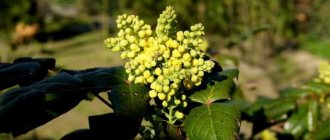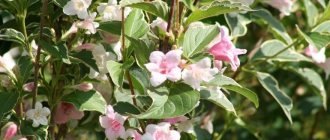General overview of the classification
From 1913 to 1929, botanists and plant growers in Holland and England worked to create a classification of the species and varieties of tulips existing at that time. Since then, it has been periodically updated - new varieties are added and outdated ones are excluded.
The modern international classification divides tulips into 4 large groups, which, in turn, are divided into classes (there are 15 of them). The division of this plant into groups was based on the timing of their flowering. The exception is the last (fourth group), which includes wild species and all varieties of tulips derived from them.
We propose together to consider in more detail all the positions of this classification. And the presented photos and names of varieties will make our review more informative.
A few words about care
One of the main points of growing tulips is annual replanting. Double tulip bulbs are produced in small quantities, but they attract gardeners because they are not fussy to care for. To preserve the variety, they should be dug up every year. After the bulbs have been removed from the soil, they should be dried, the old layers should be cleaned and stored. The result of flowering, as well as the general condition of the plant in the future, directly depend on compliance with the rules for preserving the bulbs and the temperature regime, which should not exceed 25 degrees with a plus sign.
Thus, we can conclude that terry tulips are especially memorable and original among other types. In all the variety of varieties, every gardener will be able to choose flowers that suit him and like them. With proper planting and further care, they will not only be able to decorate the site and make changes to the landscape, but also bring a fresh note and brightness to everyday life.
It is recommended to plant double tulips, as well as other varieties of unusual shapes, in the front zone of a flower bed, mixborder or next to paths. In addition, they look good in flowerpots and containers, which will allow you to admire each flower up close.
Early blooming tulips. Group-I
The first group consists of early flowering tulips. It is divided into two classes - simple and terry.
Class-1. Simple early flowering
Simple early-blooming tulips (Tulipa single early) have been known for quite a long time, since the times of Peter the Great. They are strong and hardy, and are not afraid of spring weather, which is why they are very popular. They reach a height of 40 cm. The flowers have the shape of a glass or bowl and tend to open completely. The color is dominated by bright and warm yellow-red tones. Flowering begins around mid-April. Tulips of this class will adequately decorate a spring flower bed. Looks good in containers and pots. They are often used for winter forcing. But due to the insufficient length of the peduncles, they are not suitable for cutting.
Christmas Dream
Diana
Mickey Mouse
Couleur Cardinal
For example, the red-pink Christmas Marvel, bred in 1954, became the basis for the creation of many wonderful sports (“sport” is a plant with characteristics different from those characteristic of a given variety, for example, a different color of the petals, the absence of a border, etc.). One of them is Christmas Dream - a soft pink glass, located on a strong 45 cm peduncle.
Large and wide Pink Trophy glasses attract attention with their lilac-pink hue. A variegated red and yellow Mickey Mouse will add a sea of bright sunny colors to the garden.
The very popular and unpretentious plum-red tulip of the Couleur Cardinal variety is ancient, its history begins in 1845. But thanks to its highly decorative properties and simple care requirements, it is still actively grown. The low (up to 30 cm) peduncle makes it convenient for creating flower beds, borders, and ridges.
A short, robust plant (15-20 cm) with elongated glasses of deep red color, Brilliant Star looks amazing in a group container planting. Matching it is the snow-white variety Diana (bred in 1909), which is equally small but with a large flower glass.
The delicate and romantic Olga variety has a cup-shaped deep pink flower with a white edge. The light orange General de Wet, despite its considerable age (brought out in 1904), will adequately decorate any flower garden.
Of course, we have named only a few representatives of this class, although it is considered small.
It will be useful to read:
Varieties of herbaceous peonies This ornamental plant with luxurious flowers and beautiful openwork foliage is considered one of the most ancient species, because it…
Class-2. Terry early flowering
Terry early-blooming tulips (Tulipa Double Early) begin their history around 1613. “Double tulips” received their European name due to the special structure of the flower, which has two rows of petals (as if one six-petaled flower is in the middle of the other). Especially lush varieties have three additional petals. Double tulips are quite short (up to 30 cm), which makes them unsuitable for cutting, despite the beautiful large flowers (their diameter when opened is about 12 cm). They are often used as a potted plant and for forcing, and in the garden they adequately decorate the front rows of various flower beds. This class is characterized by long flowering (more than 10 days).
Abba
Melrose
Mondial
Verona
Monte Carlo
Monte Orange
Like simple tulips, early double tulips have a strong peduncle, are resistant to spring weather and bloom at the same time. Although sometimes even a strong stem cannot hold a heavy, luxurious flower.
The baby (about 10 cm) Abba is very popular; its rich red flowers immediately attract attention. The varieties Monte Carlo and Mr. will greet spring with large yellow flowers. van der Hoef. Crimson petals edged with soft pink make up the flowers of the Melrose variety. Fans of orange flowers will love the stunningly bright melon-salmon Monte Orange.
The most delicate colors will be given to you by the light lemon variety Verona, the snow-white beauty Mondial, and white with small yellow stripes by Evita.
This class is also considered not numerous, but the choice is huge.
Although this group is called early-blooming, it should be noted that some varieties of Kaufman, Greig and other botanical tulips bloom even earlier.
Queen Sland
Visually, this is one of the most beautiful varieties of double tulips (photo can be seen below). Queen Sland is characterized by an incredibly delicate and sweet pale pink color. The flower is not tall compared to previous varieties, but at the same time it has a rather large bud, the diameter of which reaches 13 cm. This variety is characterized by a powerful leaf system.
Medium blooming tulips. Group-II
The second group consists of tulips of medium flowering period, which are divided into two classes - Triumph and Darwin.
Class-3. Tulips Triumph
tulips were introduced after 1910, and in 1923 they were put up for sale for the first time and already had an original name. In the process of their selection, simple early tulips, Darwin hybrids, as well as some ancient varieties were used. A distinctive feature of this class are high (about 70 cm), fairly strong peduncles, large goblet-shaped flowers that hold their shape well. The color of the petals can be absolutely any, of various shades and their combinations. Flowering is long-lasting, beginning in late April-early May.
Amazone
Barcelona
White Dream
All the characteristics of Triumph tulips make them suitable for cutting. They are also widely used in the decoration of flower beds. Can be used for mid and late forcing. They reproduce well vegetatively.
Now Triumph tulips form the most numerous class.
To present them to you clearly, it is very difficult to choose a few varieties from such diversity and splendor.
It is impossible to miss the Arabian Beauty tulip. Its large (up to 12 cm) light purple glass, thanks to its yellow rim, glows from within like a magic lamp. The Roman Empire variety has an interesting color; the red petal on top is decorated with a wide white border.
The snow-white elongated White Dream flower looks very aristocratic. Red, with a velvety tint, Ben van Zanten will flash brightly in the flowerbed. The sunny yellow Strong Gold will add golden colors to your area; its glass never opens and lasts for a long time after cutting. The peachy-orange Amazone will provide a positive mood. Fans of black tulips will be interested in the Ronaldo variety with very dark velvety purple petals.
Ben van Zanten
Strong Gold
Ronaldo
The unusual shape of the glass with sharp, slightly curved white petals and the pleasant aroma make the Agrass White variety attractive. The pink-lilac variety Barcelona also has a wonderful sweetish aroma.
Caring for and growing Triumph tulips is very simple. They are undemanding to soil composition and can grow in the shade and even in windy places.
Class-4. Darwinian hybrids
Darwin Hybrids are the most common class of tulips, which were formed in 1960. They represent a selection of Darwin and Foster tulips. These hybrids have a high stem (up to 80 cm) and a large cup-shaped flower (about 10 cm). A characteristic feature of the flower is its rectangular bottom, most often black. The petals of this class of tulips are predominantly red, although other colors are found, including bicolors. Darwin's hybrids do not only have flowers of violet-lilac shades.
Big Chief
The main disadvantage of most varieties in this class is their ability to open fully on a sunny day, although some people even like it. But Darwin's hybrids are resistant to diseases and spring weather, and remain decorative for a long time when cut. They are widely used in spring flower beds, as well as for March forcing. The varieties of this class are very similar to each other.
A beautiful salmon shade distinguishes the Daydream and Chambery varieties. American Dream has a very elegant glass with an unusual color; the red rim looks very impressive on the sandy yellow petals. The Come Back tulip has a royal crimson-red color. Smooth transitions from almost red to pale pink distinguish the color of the petals of the Big Chief variety. The magnificent elongated yellow Conqueror glass exudes aristocracy.
Armani
Hatsuzakura
Daydream
Gavota
Ivory Floradale
American Dream
The most delicate colors are represented by varieties: Hatsuzakura - creamy white with a lilac-pink wide border; Ivory Floradale; snow-white Lanka.
Lovers of dark shades should definitely pay attention to the Gavota variety and its dark burgundy flowers with a yellow border; Armani tulips are dark red with a thin white border.
As you can see, although the flower shape of Darwin hybrids is the same, the variety of colors makes them different from each other.
The best varieties for forcing
The profitability of forcing goods for sale is justified only in cases where substandard planting material is no more than 10%. If proper care in compliance with agricultural technology led to the fact that the number of defects turned out to be above 10%, then this means that the planting material was most likely chosen incorrectly.
To successfully run a business, a florist entrepreneur must be able to choose the right varieties of ephemeroids for forcing.
Garden flowers are grown in flower beds, which are located in sunny areas and blown by the wind. Tulips grown in greenhouses grow in close quarters and with little natural light.
The formation of strong flower stalks and beautiful buds in such conditions is possible only for the most unpretentious and healthy plants. Therefore, flower growers who are engaged in forcing tulips, when choosing planting material, should choose disease-resistant and unpretentious varieties.
Christmas Marvel
Of the most commonly used varieties for early or mid-distillation, Christmas Marvel can be distinguished. This simple early tulip is characterized by the fact that its bulbs require short cooling. Thanks to this, with the help of forcing, flowering can be achieved by Christmas. The flowers of this variety are large and goblet-shaped. The color of the petals is pink. The flower base is yellow on the inside and has a thin white border.
Cooler Cardinal
Cooler Cardinal is a classic variety. It has strong and powerful, although low peduncles. The shape of this early simple tulip is elongated, goblet-shaped, and the color is rich scarlet.
Monsella
Among the unpretentious terry early varieties, Monsella can be distinguished. Its difference from other varieties is that 2-3 buds can form on the stem. The corollas of Monsella are multi-petaled golden. They are decorated with scarlet touches. The bud looks elegant, after cutting it retains a fresh look for a long time and does not fade.
Alexander Pushkin
A prominent representative of the variety used for late forcing is the Alexander Pushkin variety. Its peduncles are strong and of medium height. The corollas are large, cup-shaped. The dark purple petals are bordered by a thin white stripe.
Other varieties for forcing
The height of the peduncles of Barcelona variety tulips is approximately 60 cm. The lilac-pink buds are goblet-shaped. Another popular variety for forcing, White Dream is characterized by large flowers of a creamy white color.
Of the simple late tulips used for forcing, Menton can be noted. Its buds are cone-shaped and pink in color, which becomes light apricot towards the edge of the petals.
There are no technological difficulties when forcing bulbs. This is a rather troublesome task, but if you know well the basic properties of the varieties used, you can force parrot or lily-flowered tulips.
Late blooming tulips. Group-III
This group is the largest and most diverse. It includes 7 classes - simple, lily, fringed, green, Rembrandt, parrot, terry.
Class-5. Simple late bloomers
Simple late-flowering ones (Single Late) united in their class Darwin tulips, as well as the old species Breeder and Cottage. The newly formed class is characterized by a fairly high stem (up to 75 cm), large egg-shaped flowers with an almost square bottom and rounded petals. The color range is not limited; there are also variegated bicolor varieties. They begin to bloom in mid-May. Thanks to the strong, tall stem and long-lasting decorative effect of the flower, they have proven themselves well in cutting and are very popular for decorating areas. But not all varieties are suitable for forcing, since they have a long growing season. This class of tulips is quite hardy in terms of unfavorable conditions.
Renown
Menton
Cafe Noir
Blushing Lady
Hemisphere
Weiss Berliner
With their unusual two-tone color, the yellow with pink-lilac veins of Blushing Lady, the white Hemisphere flower, as if shaded with a crimson pencil, and the pretty white-pink with a bronze-yellow border of Aleida attract attention.
Dark colors can be represented by varieties such as Cafe Noir with its burgundy coffee glasses, black and purple Queen of Night, purple Bacchus.
Light pink Angels Kiss, silky carmine-pink bud Renown, white with a light creamy tint Weisse Berliner, apricot-pink Menton captivate with their tenderness. Of an unusual shape with bent petals and lilac-pink, like a porcelain glass in the Picture variety. The snow-white Weisse Berliner will surprise you with its many flowers.
Rich red Wisley with a yellow bottom, bright red Gordon Cooper, red-pink with a wide orange border Favorite Beauty, salmon-orange My Lady, rich yellow with red touches Hocus Pocus will make your garden bright and sunny.
It will be useful to read:
We design flower beds with May tulips ourselves. In personal plots, the delicate greenery of the landscape “explodes” with lush spots of flower beds. In every garden, among...
Class-6. Lily tulips
Lilyflowering tulips came to Europe from Turkey in the middle of the 16th century, but due to their poor hardiness they did not take root. Subsequently, as a result of selection, fairly strong varieties of these tulips were obtained. Now they delight everyone with their lily-like glasses with gracefully bent pointed petals. The stems of lily-shaped tulips are strong and of medium height (about 60 cm). They bloom in mid-May (immediately after Darwin hybrids) and are the first of the late-blooming class. The color of the flower can be any. Suitable for cutting and also very intensively used in landscaping. Only some varieties are suitable for forcing.
Ballade
Ballade White
Ballade Dream
Lily tulips are very beautiful! For example, the varietal group Ballade presents flowers of various colors - purple with a white border Ballade, purple with a lemon-yellow border Ballade Dream (Sonnet), bright yellow Ballade Gold, orange Ballade Orange (Je t' aime), white-cream Ballade White, lilac-pink with a wide white border Ballade Lady.
You will feel the splendor of noble red tones with the rich red tulips Red Shine, similar to a velvet royal crown, the lighter color of the Royal Gift tulip, the orange-scarlet Cobra, and the dark red Captain Fryatt.
The personification of tenderness can be called the cream variety Elegant Lady, light yellow with a wide white border Budlight, light pink Zantens Memory, ivory glass Macarena, white with pink-raspberry stains Holland Chic.
Variegation will be provided by yellow-orange with a crimson stripe Marjolein, yellow star-shaped Flashback, salmon Kokker Fan Fan, orange-raspberry Marjan.
Dark tones can be represented by the velvety purple Burgundy, a contrasting combination of dark purple and white in the Akita variety.
Class-7. Fringed tulips
Warbler
tulips or orchid tulips are the result of a random mutation of simple tulips. The first such variety was recorded in 1930. Modern selection brings them out purposefully. Many characteristics of fringed tulips depend on the original class. For example, flowering times. In general, they are tall (up to 80 cm), the shape of the flower can be goblet-shaped, cup-shaped, or lily-flowered. The main feature that distinguishes this class is the presence of needle-like outgrowths along the edge of the petals - “fringe”. Their tepals are tougher than those of other classes. Varieties bred from Darwin hybrids are suitable for forcing, and those derived from late tulips are good for cutting.
Fringed tulips are certainly very beautiful, their colors are very diverse. For example, white with purple splashes Aria Card, chic crimson-red Barbados, dark purple Black Jewel, red-brown Labrador, white and pink Crispion Love, cherry with a thin white border New Santa, snow-white Honeymoon, creamy orange Ballroom.
Yellow Warblers are reminiscent of fluffy chickens, a pleasant combination of purple with yellow fringe on Aleppo flowers.
Aria Card
Barbados
Crispion Love
Bastia
Black Jewel
New Santa
Terry fringed varieties look unusually lush - the most gorgeous red-pink Kingston, the most delicate white-pink Queensland, variegated red-yellow Bastia, dark red Maroon, foamy white Snow Crystal.
Planting and caring for this class of tulips requires more effort than the original species, and they also require careful protection from the variegation virus.
Class-8. Green flowers
Green-colored tulips (Viridiflora), as well as fringed ones, are the result of a mutation that was fixed through selection. Green-colored tulips were allocated to a separate class in 1981. They are characterized by a green bottom and a thick green center on the petals, which can be of any color. There are varieties of medium and high height. The unusual appearance has made these tulips very popular nowadays. They are actively used in decorating flower beds and have proven themselves well as cut flowers.
Since this class of tulips is young, its varietal diversity is relatively small.
Golden Artist
Virichic
Night Rider
Meet some representatives of the green-flowered tulip class. Delightful and delicate pale orange with pink Golden Artist, elegant pink Virichic, violet with a silky tint Night Rider, noble red Eyecatcher. A wonderful lily-shaped flower, painted in several shades of green with a delicate creamy Deirdre border. And the yellow Monte Spider tulip will amaze you with its exotic shape.
Since green-flowered tulips are similar in origin to fringed tulips, they are also inferior to the original species in hardiness and resistance to the variegation virus.
Class-9. Tulips Rembrandt
Tulips Rembrandt. This class unites all the variegated forms of tulips. Initially, these were Darwin tulips affected by the variegation virus. Then this trait was fixed genetically in some varieties. The leader in tulip cultivation, the Netherlands, introduced a ban on Rembrandts and they stopped growing them. The only exceptions were some ancient varieties. The characteristic coloring of their petals includes spots and strokes, which makes them original. These are medium-sized tulips. They are used with caution in park landscaping. This is the smallest class.
Absalon
Adonis
The amazingly unusual black and white color of the Black and White tulip, dark red with yellow streaks Absalon, purple with white streaks Adonis, purple with dark streaks and light yellow splashes Papillion, raspberry glass with whitish streaks Columbine.
If you decide to decorate your site with Rembrandt tulips, then plant them separately, away from other species, to prevent infection.
Class-10. Parrot tulips
Parrot tulips (Parrot) are the most original of all types. Their petals can be of any bizarre shape - twisted, curved, wavy, torn. This class received its name for the resemblance of the petals to the bright, disheveled feathers of parrots. These tulips are mostly medium-sized (up to 60 cm). Their huge flower heads can reach up to 20 cm and are correspondingly heavy. Therefore, when decorating a site, they should be tied up or planted between other plants that can support them. For the same reason, these tulips should be protected from the winds. They bloom most often in the second half of May.
Let's start getting acquainted with this type of tulip with one of the most exotic - green-yellow Exotic Parrot. Well, can you immediately tell that this is a tulip?
Dark purple fluffy Frozen Night, blue Blue Parrot, bright yellow Yoko Parrot, fancy purple and white Mysterious Parrot, greenish-pink Air, velvet red Rococo (there is also an orange variety), randomly arranged snow-white petals with dark green veins Super Parrot varieties.
Exotic Parrot
Frozen Night
Estella Rijnveld
Mysterious Parrot
Rococo
Super Parrot
Truly like a tropical bird, the combination of coral red, yellow, cream and green in the petals of Apricot Parrot. A very unusual one, similar to ice cream in a cup, Ice Cream, is very popular.
It smells of spring and tenderness from the peachy yellow with the slightest raspberry blush of the Creme Upstar tulip.
Variegated varieties are red and yellow Double Flaming Parrot and white and crimson Estella Rijnveld (Gay Presto).
If you want to appreciate the beauty of parrot tulips, then plant them in the foreground separately from other varieties.
Class-11. Terry late
Terry late tulips (Double Late). This class of tulips is very similar in shape to peony flowers, which is why they are also called peony-shaped. They have an average stem height (up to 60 cm) and a very large, densely double flower. This and also the timing of flowering distinguishes them from the early terry ones.
The large flower bowl of these tulips is very heavy, so they, like parrots, should be tied up and protected from winds and heavy rains.
Due to their characteristics, these tulips are used mainly for decorative landscaping.
The variety Double Beauty of Apeldoorn is unusual for its red-yellow color - these two colors can be located differently on each flower, and even single-color (yellow or red) specimens can be found.
Cartouche
Double Beauty of Apeldoorn
Miranda
The white and pink variety Angelique is similar to apple blossom. The sandy yellow with green touches of Akebono is beautiful. Cast in purple velvet of Antraciet and Black Hero varieties. Very cute purple Blue Wow. And the petals of the Miranda tulip seem to be made of bright red satin ribbon.
You can call the original Cartouche variety a chameleon. At first the bud is light green with a milky center and scarlet drops along the edges. But when it blooms, it becomes snow-white with a wide crimson border.
Yellow with a wide white border, Monte Sweet, in addition to a magnificent flower with pointed petals, also has a pleasant sweet aroma.
Species tulips. Group-IV
The last group includes wild species of tulips and hybrids bred from them. All of them, as a rule, are low-growing, resistant to adverse conditions and are in great demand in landscape design. Among them there are also multi-flowered specimens.
Class-12. Kaufman tulips
Kaufman tulips (Kaufmanniana). This class of tulips is considered a primrose and blooms in March in warm climates. The height of the peduncle ranges from 8 to 32 cm (depending on the variety). The flower glass is large enough for a low-growing plant (up to 8 cm). After the flower has fully opened, its pointed petals form a star. Some varieties (hybrids with Greig's tulips) have very decorative leaves with brown, violet or purple patterns in the form of stripes and spots.
This class is resistant to the variegation virus. Grown as a pot crop. Such tulips are irreplaceable in alpine hills, rockeries and other flower beds where low-growing plants are required. These flowers can be used to decorate the tree trunks.
Corona
Scarlet Baby
The Shakespeare variety has an unusual shade of orange; inside the flower there is a yellow center framed by a red border. The Corona tulip forms a real star, the yellow center is accented with red strokes, and red flames flash on the outside on a cream background. The white and red elongated glass is of the Ancilla variety.
The highly elongated glass of a reddish-pink hue makes the short Pink Dwarf very unusual.
Scarlet Baby, despite her short height (15 cm), has a long, graceful glass of pinkish-salmon color that is half her height.
There are also double varieties of Kaufman tulips. For example, deep red Holland Baby, lemon yellow with white border Calimero.
Class-13. Foster's Tulips
Foster tulips (Fosteriana). This class consists of all varieties and hybrids of Foster tulips. Compared to Kaufman tulips, they are taller (30-50 cm) and have a very large elongated flower (up to 15 cm). In addition, the flowers of this class have a special shape with slightly bent outer petals. Hybrids with Greig's tulips have inherited striped leaves, which makes them even more decorative. They bloom in April. Quite well resistant to variegation virus and bad weather.
Unfortunately, this type of tulip has recently become much less grown. Although it will wonderfully decorate any flower garden, and some varieties are even suitable for cutting.
At the end of March, Easter Moon can already please you with its flowering. Its yellow petals seem to be covered with silvery dust.
Flaming Purissima
Yellow Purissima
Sweet Sixte
The most popular variety series is Purissima. The white (sometimes slightly creamy) bud of Purissima is about 10 cm high. Flaming Purissima is white with thick pink shading, looks very original. The petals of Yellow Purissima have a delicate shade of lemon yellow.
Sweet Sixte pink tulips are very beautiful. An interesting red variety with a yellow base and long petals is the very low-growing variety Princeps (15 cm). But the bright red Pinkeen is already much taller (40 cm), so it is even suitable for cutting. Graceful white with a dark pink center petal, Border Legend glasses can also be used for cutting. Red-orange with a huge yellow bottom, Juan boasts wide brown-burgundy stripes on the leaves. Reminiscent of a parrot, the Exotic Emperor double tulip is white with a yellow-green center.
Class-14. Greig's tulips
Greig's tulips (Greigii). This class also includes all hybrids of this species. The height of these tulips ranges from low-growing to 50 cm. The flowers are large, mainly in red and yellow colors. They bloom early, right behind the Kaufman tulips. Distinctive features are brownish-red patterns on the leaves and often slightly hairy stems. They are used on alpine slides, rockeries and other flower beds. Their beautiful flowers and decorative leaves often decorate the foreground of various flower beds. In addition, their flowering is very long, the buds do not fade for a long time.
Double Toronto
Czaar Peter
The medium-sized (35 cm) variety White Fire attracts attention with white-cream petals, which are decorated with bright red narrow stripes. Very delicate medium-growing apricot-pink with sharp ends of Fur Elise petals. A bright and sunny red and yellow, Chierful has a beautiful glass with rounded ends and slightly curved outer petals. Red and white glasses of the Czaar Peter variety become even more attractive when their buds open. And the raspberry-red Cha Cha Cha variety with a white border along the edge of the petal is suitable for cutting. Low-growing (up to 20 cm) Donna Bella, thanks to the wide dark red stripe in the middle of each vanilla-yellow petal, seems to be in a dark frame.
The terry variety of reddish-salmon color Double Toronto is very beautiful. Terry varieties of Greig tulips include the scarlet Dubbele Roodkapje (Double Red Riding Hood) with a beautiful pattern on the leaves, as well as the unusual pink-white-blue-red-yellow, with a smooth transition of the most delicate shades of Easter Egg Mix.
Class-15. Wild tulips
Wild (botanical) tulips (Other species). This team included all types and varieties of tulips that were not included in the previous classes of the fourth group. As a rule, these are wild species and their hybrids. The name "botanical" is used for these tulips. Most of them are short, but there are specimens of medium height. The color is varied, there are multi-flowered varieties. These tulips bloom mostly early. This class is simply irreplaceable in landscape design when decorating rockeries, alpine slides, rocky gardens, as it carries the fragile beauty of wild nature.
Tarda
Little Beauty
Bakeri Lilac Wonder
Little Princess
Similar to a mountain flower, white with a yellow center on the inside and reddish-brown on the outside, the Tarda tulip. Delicate, lilac-pink with a large yellow center Bakeri Lilac Wonder. Baby Little Beauty is incredibly beautiful, its flower star in the middle is dark blue, then turns into a soft pink shade, and the main part of the petal is crimson. Bright red “light” flowers from Praestans Zwanenberg, Red Hunter. Violet with a yellow center, very miniature Humilis Persian Pearl. The most delicate shade of creamy pink in elongated Little Girl glasses clearly lives up to its name, and this wonderful variety is multi-flowered. Little Princess Little Princess pleases the eye with orange stars with an expressive black center.
The very unusual Acuminata tulip belongs to this group. It has narrow, long red-yellow petals, and the color ratio can vary; each specimen has its own color proportions.
Acuminata
Humilis Persian Pearl
The hybrid of dwarf mountain tulips Нumilis Tete a Tete forms a lush, almost creeping on the ground, bush 10 cm high with red-violet flowers similar to peonies.
Eternal Flame
A very unusual variety, Eternal Flame, which means “eternal flame.” The flower bud has a pink-red color with an original shape, and the foliage is edged with pale pink stripes. The height of the plant is small, only 30 cm. According to the type of flowering, Eternal Flame is classified as medium. The color of the petals resembles the classic pink-red lipstick color. This is an exclusive variety, which in addition has a pronounced attractive aroma.
It is worth noting that many varieties of double tulips are also fringed, since along the edges of the petals there is a fringe of needle-like outgrowths of various lengths that stick out in different directions. Most of the latest new products developed by breeders have fringe and other significant characteristics, such as increased doubleness, bicolor, variegation and multi-flowering. This is due to the fact that the selection of many plants is now moving towards the maximum combination of expressive qualities.











